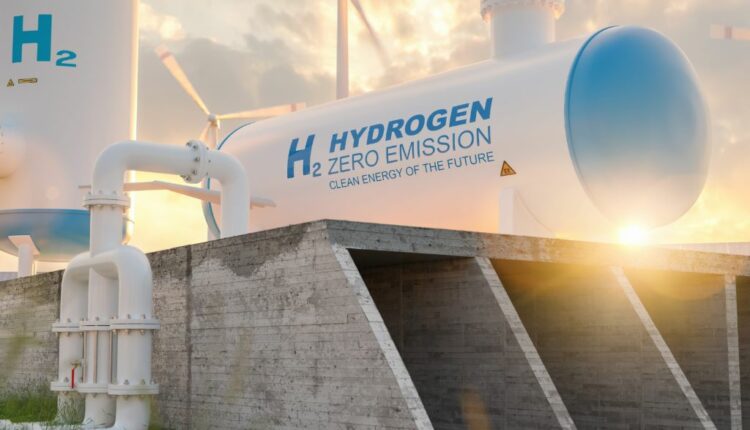Bridging the Gap: Storage & Distribution in the Hydrogen Value Chain
In recent years, interest and activity in the hydrogen sector have accelerated, driven by governments recognising hydrogen’s role in the energy transition and companies worldwide capitalising on emerging market opportunities through the supply of services, products, technologies, and projects.
While much focus has been placed on the upstream development of low-carbon hydrogen production sites (both green and blue) and downstream advancements in fuel cell technologies and industrial use cases of hydrogen, the midstream infrastructure needed to store and transport hydrogen has often received less consideration.
Developing this critical link in the value chain is vital for ensuring the full potential of hydrogen as an industrial feedstock, fuel, and energy carrier, bridging the gap between production and consumption. A broad spectrum of solutions exists for hydrogen transportation and storage.
This article delves into hydrogen storage and distribution technologies, examining their use cases and highlighting recent commercial activities in this domain. For a more in-depth exploration of each technology and associated commercial activities, please refer to IDTechEx‘s new market report, “Hydrogen Economy 2023-2033: Production, Storage, Distribution & Applications”.

The Need for Hydrogen Storage & Distribution
Despite its impressive gravimetric energy density, one of the main challenges with hydrogen is its storage and transportation complexity. This stems from its extremely low density at ambient conditions leading to low volumetric energy density. Consequently, significant compression (100 to 700 bar) or liquefaction at an extreme boiling point of -253°C is necessary to enhance its volumetric energy density for storing and transporting adequate amounts.
Although mature, incumbent compressed gas and cryogenic liquid storage methods have significant disadvantages. These methods are energy-intensive, diminishing the hydrogen’s net energy content. Compression consumes 10-30% of the original energy, while liquefaction can use up to 30-40%, with the added burden of requiring a separate liquefaction plant, entailing considerable capital investment.
Such inefficiencies significantly hinder some applications, such as FCEV mobility and energy storage, by sharply lowering the overall energy efficiency. Safety risks with compressed gas storage and boil-off issues with liquid H2 storage lead to hydrogen loss, further exacerbating the challenges. These factors collectively make domestic and international hydrogen transport expensive and inefficient.
Globally, hydrogen pipelines do exist, totalling an estimated 5,000 km. Still, their reach is restricted mainly to specific regions like parts of Texas and Louisiana around the Gulf Coast or areas in France, Belgium, Netherlands, and Germany.
Typically operated by industrial gas giants like Air Products, Linde, and Air Liquide, these pipelines serve industrial facilities such as refineries within a limited range of production sites. This confinement emphasises the pressing need to expand pipeline networks to connect varying production and consumption regions more widely.

Hydrogen Storage Options and Their Use Cases
Many solutions are available, but the optimal choice depends on storage size and application. Compressed gas and liquid hydrogen storage tanks will likely continue to serve stationary storage applications, such as hydrogen refuelling stations.
Liquid hydrogen spheres may store large quantities at production sites and import/export terminals. Established players like Tenaris (compressed gas storage), Chart Industries (liquid H2 tanks), and McDermott CB&I (liquid H2 spherical vessels) already supply these well-commercialised solutions.
Compressed hydrogen tanks, especially Type III and IV composites, are gaining traction in the FCEV market, as they are most suitable for storing hydrogen onboard a vehicle. Many FCEVs, such as the Hyundai Nexo and Toyota Mirai, use Type IV tanks storing hydrogen at 700 bar.
Compressed storage is expected to persist in many FCEV segments, dominating light-duty ones. However, liquid hydrogen (LH2) tanks present the advantage of higher capacities, which could benefit heavy-duty segments. Hence, some companies, like Daimler Truck, are trialling LH2.
Storage systems using metal hydrides show promise for stationary applications similar to existing compressed and liquid H2 systems. These systems, which operate at much lower pressures (10-50 bar) and use pressure cycling for adsorption/release, may be more suitable for hydrogen energy storage applications due to reduced energy consumption and, thus, improved round-trip efficiency.
Companies like GKN Hydrogen are progressing towards commercialisation, having demonstrated their systems in off-grid energy storage and residential combined heat and power (CHP). Many more companies are developing strategies based on metal hydrides.
Underground hydrogen storage, utilising reservoirs like salt caverns, builds on established natural gas storage methods. Operators like Uniper and Gasunie plan integration of such facilities into hydrogen pipeline networks in the coming years.
Underground storage is expected to play a crucial role in seasonal hydrogen storage to supply sectors in lower demand, like natural gas storage. Industrial projects may also use underground facilities as a buffer reserve of hydrogen – HYBRIT, a sustainable steelmaking project in Sweden, is testing such a concept using a lined rock cavern (LRC). However, regulation and long project development times remain vital challenges for this storage type.
Hydrogen Distribution Options and Their Use Cases
Compressed and liquid hydrogen trailers supply smaller-scale applications like refuelling stations or pilot projects. This trend will likely continue as these methods may not be viable with large-scale transportation where continuous hydrogen supplies are needed. Many vessels could be used for compressed gas transport, from Type I to IV, developed by companies like Hexagon Purus. Other companies, such as LIFTE H2, are using trailer concepts to build mobile refuelers, which can compensate for the lack of a hydrogen refuelling station.
Larger scale and longer-distance transport will necessitate pipelines running directly from production to end-use sites or feeding into pipeline networks. New construction is planned, with some projects like the HyNet North West Hydrogen Pipeline already underway. Repurposing natural gas pipelines is possible but requires extensive simulation, testing, and risk evaluation to identify suitable channels.
The European Hydrogen Backbone initiative is a leading initiative in developing a large-scale pipeline network, with over 30 operators participating – many of the pipelines that will be used are planned to be repurposed from existing networks.
Blending hydrogen into natural gas is also a popular topic as it partially decarbonises the heating and power sector, with projects like HyDeploy providing a blend of 20-vol% safes in existing pipelines. However, a higher percentage of hydrogen blends will require the modification of many appliances and equipment in the residential and industrial sectors.
International long-distance transport may involve liquid hydrogen or conversion to hydrogen carriers like ammonia or LOHC. Liquid hydrogen transport was demonstrated by the Suiso Frontier vessel (built by Kawasaki Heavy Industries) in the HESC project, transporting hydrogen from Australia to Japan. However, this pathway may be less viable than carriers due to the technical and commercial difficulties of dealing with liquid hydrogen.
The advantage of using hydrogen carriers is the utilisation of existing transport routes and vessels, albeit requiring additional processing facilities. Companies like Chiyoda Corporation and Hydrogenious LOHC Technologies are on the path of commercialising their LOHC solutions. An ammonia receiving terminal is also planned at the Port of Rotterdam as a collaboration between Royal Vopak, Gasunie, and HES International. Many more companies globally are also seeing ammonia as the more viable option.
Future Directions & Further Insights
The global embrace of hydrogen storage and distribution technologies will expand as production and end-use sites increase. This represents an opportunity for product supply, project development, and R&D to innovate and refine existing methods.
IDTechEx projects the global low-carbon hydrogen production market to reach US$130 billion by 2033, expecting substantial transport and storage solutions growth. The new “Hydrogen Economy 2023-2033: Production, Storage, Distribution & Applications” report offers an exhaustive overview of the value chain, including technological analyses, comparisons, commercial activities, innovations, and market trends.
To learn more about this IDTechEx report, including downloadable sample pages, please visit www.IDTechEx.com/
UP IN NEWS
- Ceer and Siemens Announce Collaboration to Digitally Transform the Electric Vehicle Development Process
- Volvo Car USA Adds XC60 Black Edition to 2024 Lineup
- Smoking Before Test Could Cost Drivers Their Licence
- HMGMA, GA Ports Celebrate First Metaplant Shipment
- Toyota Gazoo Racing Seals Victory with First Place Finish at Rally Finland
For all the latest automotive news, reports, and reviews, follow us on Twitter, like us on Facebook, subscribe to our YouTube page, and follow us on Instagram, which is updated daily.
Stay Ahead of the Curve
Unlock the World’s Leading Source of Automotive News and Analysis.
Autoscommunity.com provides innovative marketing and advertising solutions to support an advertiser’s specific campaign objectives.
Customised programs leverage the best of Autoscommunity.com. Please contact our sales team today and see what our team can do for your custom advertising solutions.
-
Email: [email protected]
-
Please Read Our Privacy Policy
Why You Can Trust Autos Community
Our expert, award-winning staff selects the automotive-related news we cover and rigorously researches and tests our top picks.








Comments are closed.